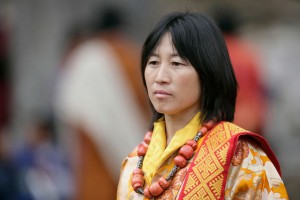- Home
- Destination
- Places to Visit
- Activities
- Cultural Tours
- Festival Tours
- Thimphu Tshechu
- Paro Tshechu
- Punakha Tshechu and Drubchen
- Takin Festival
- The Black-necked Crane Festival
- Chorten Kora Festival
- Dochula Druk Wangyel Festival
- Gomphu Kora Festival
- Haa Summer Festival
- Jambay Lhakhang Festival
- Kurjey Festival
- Lhuntse Tshechu
- Matsutake Festival
- Merak Tshechu
- Mongar Tshechu
- Nimalung Festival
- Nomad Festival
- Pema Gatshel Tshechu
- Sakteng Festival
- The Gasa Tshachu
- Trashigang Tshechu
- Adventure Tour
- Trekking Tours
- Druk Path Trek
- Dagala Thousand Lakes Trek
- Bumthang Cultural Trek
- Bumthang Owl Trek
- Gangtey Trek
- Punakha Winter Trek
- Snowman Trek I
- Snowman Trek II
- Wangduephodrang Tshechu
- Wild East Rodung La Trek
- Duer Hot Springs Trek
- Jomolhari Loop Trek
- Jomolhari Trek
- Laya Gasa Trek
- Merak Sakteng Trek
- Nabji Korphu Trek
- Samtengang Winter Trek
- Trongsa Tshechu
- Ura Yakchoe
- Spirituality & Wellness
- About Bhutan
- Travel Information
- Hotels
- Inquiry
- Gallery
- About Us
Political System of Bhutan
 The political system of Bhutan has evolved over time together with its tradition and culture. From a fragmented and a disoriented rule of the different regions by chieftains, local lords and a clan based rule, today we have a parliamentary democracy in place.
The political system of Bhutan has evolved over time together with its tradition and culture. From a fragmented and a disoriented rule of the different regions by chieftains, local lords and a clan based rule, today we have a parliamentary democracy in place.
The first move towards a systematic scheme of governance came in 1616 with the arrival of Zhabdrung Nawnag Namgyal from Tibet. He introduced the dual system of governance with the Je Khenpo as the head of the spiritual and the Desids, as the head of the temporal.
But a major breakthrough came about in 1907 when the people unanimously enthroned Ugyen Wangchuck as the fist hereditary King of Bhutan. He was the man who had proved his mettle bringing together the different Dzongpons and Penlops (governors of fortress) and the much needed stability and peace in the country. Since then, the country was ruled by the successive monarchs of under the Wangchuck dynasty.
With the move to ensure a more democratic governance of the country, the Third King Jigme Dorji Wangchuck instituted the National Assembly (Tshogdu) in 1953. Every gewog had an elected member representing the National assembly. It became a platform where the people’s representatives enacted laws and discussed issues of national importance.
The establishment of the Royal Advisory Council (Lodoe Tshogde) in 1963 as a link between the king, council of ministers and the people was another move towards democratization. It also advised the king and the council of ministers on important issues and ensured that the projects were implemented successfully.
The institution of Dzongkhag Yargay Tshogdu (District Development Assembly) in 1981 and Gewog Yargay Tshogchung (County Development Assembly) in 1991 by the Fourth King Jigme Singye Wangchuck was another move towards decentralization.
But the devolution of the power of the King in 1998 to the cabinet ministers was the highest form of decentralization. The King, thereafter, began to serve as the Head of the State while the government was managed by the Prime Minister.
In November 2001, on the advice of the Fourth king, a committee chaired by the Chief Justice of Bhutan, was formed to draft the constitution of Bhutan. The constitution was launched in 2008 and with it a parliamentary democracy introduced. The progression from Hereditary Monarchy to that of a Parliamentary Democracy has been gradual from the institution of National Assembly in 1953 to all the decentralization that followed suit. Thus, in 2008 Bhutan witnessed a major shift in its political system with the first elections launched country wide. The Druk Phunsum Tshogpa was mandated by the people to head the new government with a major victory. Today with 45 elected members, Lyonchen Jigme Y Thinley steers the government with just two opposition members from the People’s Democratic Party.
The organs of the Bhutanese government comprise of the Legislature, Judiciary and the Executive. The ruling political party, the opposition and the National Council now forms the legislative body.



